1. What Are Essential Oil Extracts?
Essential oils are more than just pleasant aromas in tiny amber bottles. They are highly concentrated plant extracts that capture the “essence” of a species—its fragrance, its flavor, and in many cases, its therapeutic activity. A single ounce of essential oil may require dozens of pounds of plant material, making these extracts remarkably potent.
Across thousands of years, essential oils have been treasured by cultures around the world. They appear in ancient Egyptian tombs, in Ayurvedic medicine texts from India, in Chinese herbals, and in the writings of Hippocrates, the “father of medicine.” While their applications varied—from perfumes and embalming mixtures to healing balms and ritual incense—the common thread was their value. Essential oils were considered gifts of nature with both practical and spiritual importance.
Today, essential oils have seen a dramatic modern revival. From yoga studios diffusing lavender for relaxation, to aromatherapists using peppermint for headaches, to eco-conscious households replacing chemical cleaners with lemon oil sprays, they have found a place in mainstream wellness. The essential oil industry is now worth over $20 billion globally, with growth expected to continue as people seek out natural, multifunctional remedies.
But with their rising popularity also comes confusion. Are essential oils “medicine”? Are they safe for children? How do you know if a bottle is genuine or adulterated? And what makes a few drops of rosemary oil so powerful for both mental clarity and hair care?
This blog is written to answer those questions comprehensively. You’ll discover:
How essential oils are made and why chemistry matters
Detailed profiles of 15 popular oils and what they’re best for
Research-backed health and wellness benefits
Safety precautions and myths to avoid
Tips for choosing genuine, high-quality oils
Industry trends and sustainability considerations
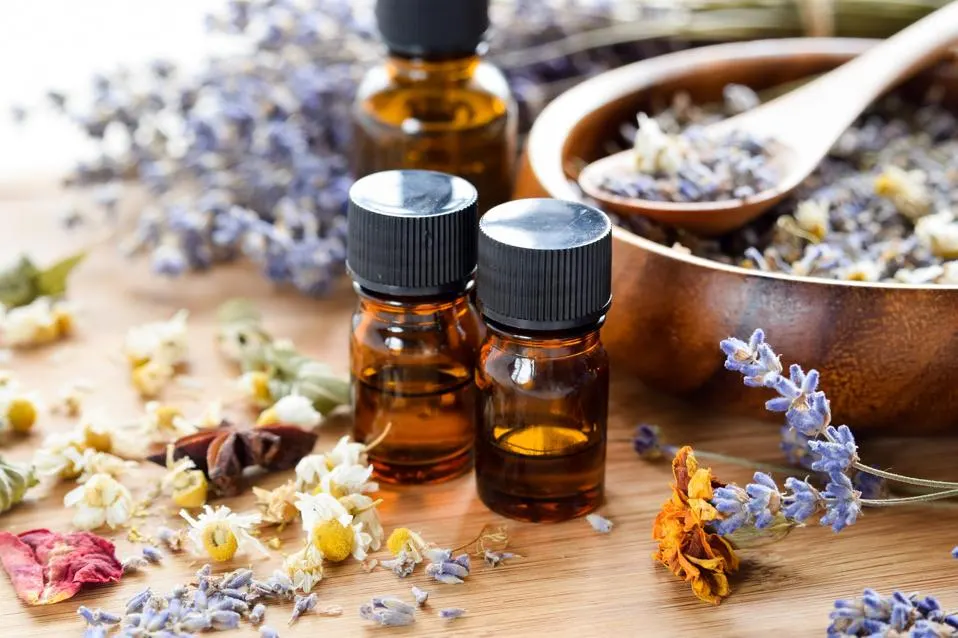
2. Understanding Essential Oils – The Science & Craft
Essential oils are volatile aromatic compounds found in specialized structures of plants—tiny sacs, glands, or resin channels. When extracted, these oils hold potent biological activity. To truly appreciate them, it helps to understand how they’re made, what they contain, and what affects their quality.
Extraction Methods
•Steam Distillation
The most common process: plant material is suspended over boiling water. Steam passes through, rupturing cells and releasing oils. The steam–oil vapor is cooled and condensed into liquid. Since oil and water don’t mix, the essential oil floats on top, while the water (called hydrosol) contains lighter aromatics.
This is used for lavender, peppermint, eucalyptus, rosemary, and many more. Proper distillation prevents overheating, which can damage delicate compounds.
•Cold Press Extraction (Expression)
Used primarily for citrus peels, this method mechanically presses the oil from rinds. It produces bright, fresh-smelling oils like lemon, orange, grapefruit, and bergamot. The downside: citrus oils oxidize quickly and can cause skin sensitivity when exposed to sunlight.
•CO₂ Extraction
Modern technology that uses pressurized carbon dioxide as a solvent. At high pressures, CO₂ becomes “supercritical,” allowing it to dissolve plant materials. When pressure is released, pure CO₂ escapes as gas, leaving behind a concentrated extract.
These CO₂ extracts often smell closer to the raw plant and contain components steam distillation cannot preserve. They’re considered premium but cost more.
•Solvent Extraction
For delicate flowers like jasmine, tuberose, and rose, heat from steam distillation would damage fragrance molecules. Instead, a solvent dissolves plant material, creating a “concrete” that is then refined into an “absolute.” These are highly aromatic, prized in perfumery, and more controversial in aromatherapy due to trace solvent residue.

Chemistry of Essential Oils
Essential oils are made of hundreds of volatile organic compounds, but most belong to a few key classes. Each class has characteristic structures, properties, and therapeutic roles.
Monoterpenes (C₁₀H₁₆)
- Chemical Nature: Built from two isoprene units; very volatile, oxidize quickly.
- Representative Compounds:
Limonene → citrus peel oils (uplifting, digestive aid).
α-Pinene & β-Pinene → conifer oils (respiratory support, antimicrobial).
Myrcene → myrtle, lemongrass (sedative, analgesic).
- Functions: Antimicrobial, decongestant, mood-elevating, air-purifying.
- Caution: Oxidized monoterpenes can irritate sensitive skin.
Sesquiterpenes (C₁₅H₂₄)
- Chemical Nature: Three isoprene units; heavier, less volatile, longer-lasting.
- Representative Compounds:
Chamazulene → German chamomile (anti-inflammatory, gives blue color).
Patchoulol → patchouli oil (grounding, skin regenerative).
β-Caryophyllene → clove, copaiba (anti-inflammatory, interacts with CB₂ receptors).
- Functions: Grounding, anti-inflammatory, skin healing, immune support.
- Caution: Generally well-tolerated, but oxidized forms may be sensitizing.
Esters (R–COO–R)
- Chemical Nature: Formed from reaction of alcohol + acid; sweet/fruity aroma.
- Representative Compounds:
Linalyl Acetate → lavender, bergamot (calming, anxiolytic).
Bornyl Acetate → fir, pine oils (muscle relaxant, balancing).
Geranyl Acetate → geranium (antispasmodic, uplifting).
- Functions: Calming to the nervous system, antispasmodic, mood-harmonizing.
- Caution: Can hydrolyze to alcohol + acid, changing activity in blends.
Alcohols (–OH group)
- Chemical Nature: Hydroxyl group makes them antiseptic and generally stable.
- Representative Compounds:
Linalool → lavender, coriander (sedative, antimicrobial).
Menthol → peppermint (cooling, analgesic).
Geraniol → rose, palmarosa (skin toning, antioxidant).
Terpinen-4-ol → tea tree (antifungal, broad-spectrum antimicrobial).
- Functions: Antiseptic, immune-supportive, skin-toning, emotionally balancing.
- Caution: Generally safe, though overuse may cause skin sensitization.
Phenols (aromatic ring + –OH)
- Chemical Nature: Strongly aromatic, highly reactive, potent antimicrobials.
- Representative Compounds:
Thymol → thyme oil (bactericidal, immune-stimulating).
Carvacrol → oregano (strong antimicrobial, antifungal).
Eugenol → clove (analgesic, antiseptic, dental uses).
- Functions: Stimulating, antimicrobial, warming, immune-boosting.
- Caution: Can be skin-irritant or hepatotoxic in excess; must dilute properly.
Ketones (C=O group)
- Chemical Nature: Contain carbonyl group; many affect mucous membranes.
- Representative Compounds:
Camphor → rosemary, camphor tree (respiratory stimulant, expectorant).
Carvone → spearmint, dill (digestive aid, mucolytic).
Pulegone → pennyroyal (neurotoxic, restricted in use).
- Functions: Expectorant, mucous-thinning, regenerative for tissues.
- Caution: Certain ketones (e.g., thujone, pulegone) are neurotoxic and should be avoided in high concentrations.
Aldehydes (–CHO group)
- Chemical Nature: Strongly scented, reactive.
- Representative Compounds:
Citral (neral + geranial) → lemongrass, lemon myrtle (antimicrobial, antiviral).
Cinnamaldehyde → cinnamon bark (stimulating, antimicrobial).
- Functions: Uplifting, anti-inflammatory, antiviral.
- Caution: Can be skin-irritant, especially citral and cinnamaldehyde.
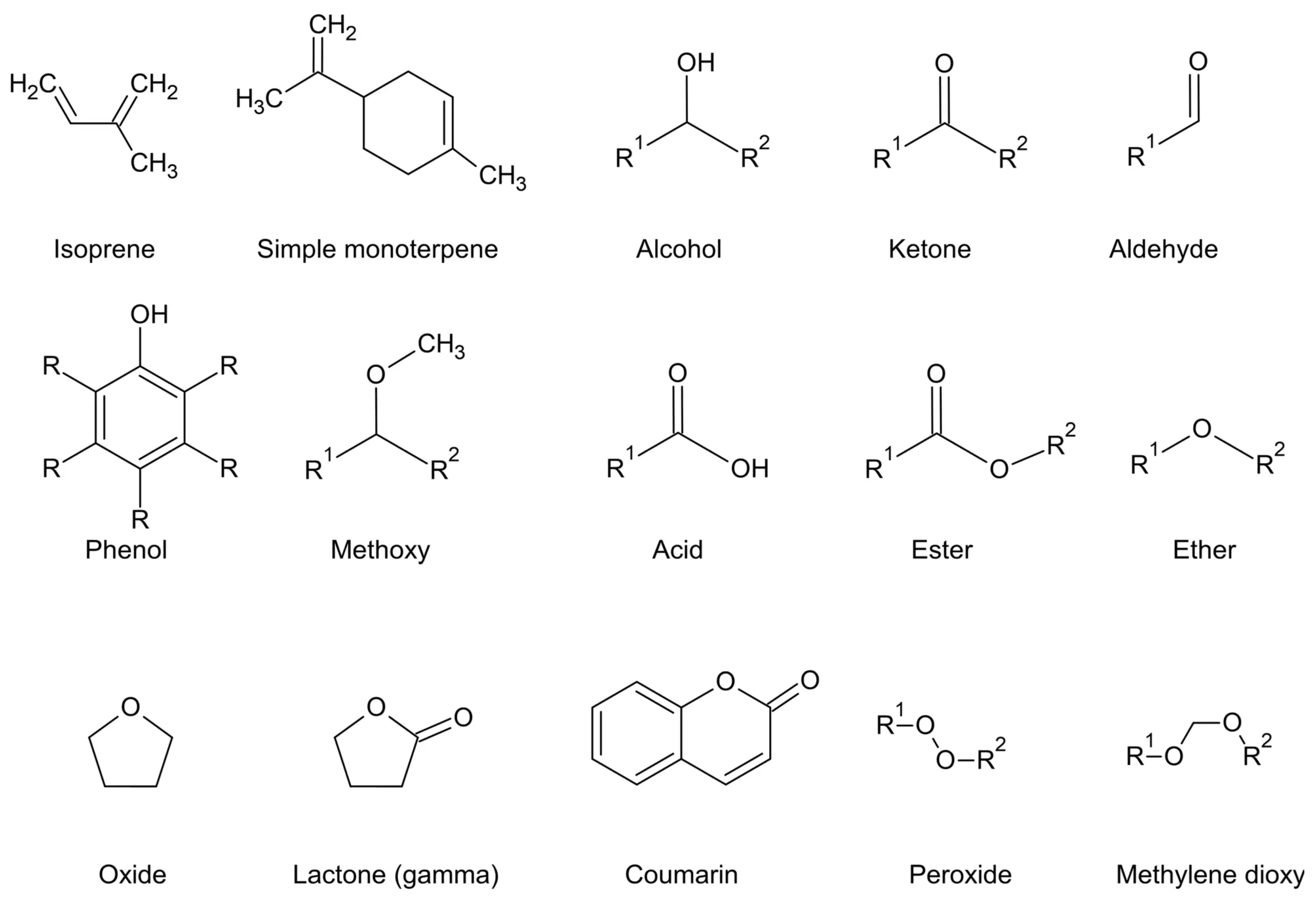
Essential Oil Grades & Quality Verification
Unlike food or pharmaceuticals, there is no universally recognized international standard for terms like “therapeutic grade” or “aromatherapy grade.” These labels are often used for marketing but carry no regulatory meaning.
Because of this, quality must be assessed through transparent verification methods, not vague claims.
Key Criteria for Authentic Quality
1.Botanical Identification
- Oils should list the full Latin botanical name (e.g., Lavandula angustifolia vs. Lavandula latifolia).
- Prevents confusion between different species with distinct chemistry and effects.
2.Country of Origin & Cultivation Details
- Terroir influences chemistry (soil, climate, altitude).
- Example: Lavandula angustifolia from Bulgaria has higher linalool; French lavender often has higher linalyl acetate.
3.Extraction Method
- Must specify whether steam distillation, cold pressing, CO₂ extraction, or solvent extraction was used.
- Each impacts purity, stability, and therapeutic potential.
4.Batch-Specific GC–MS Analysis
- Gas Chromatography–Mass Spectrometry (GC–MS) is the gold standard for verifying composition.
- Provides a chemical fingerprint of the oil, confirming purity and detecting adulteration (e.g., synthetic linalool added to lavender).
5.Additional Indicators of Quality (recommended but often overlooked)
- Batch numbers & traceability → full farm-to-bottle documentation.
- Organoleptic testing → aroma and appearance evaluation by trained experts.
- Certificates of Analysis (COA) → summary of lab tests verifying physical and chemical properties.
- Absence of additives → no dilution with carrier oils or synthetic compounds unless clearly labeled.
Shelf Life & Storage
The stability of essential oils depends on their chemical composition and how they are stored. Oils rich in monoterpenes (e.g., citrus) degrade more quickly, while resinous oils containing heavier sesquiterpenes or resins last much longer.
Typical Shelf Life by Oil Type
- Citrus Oils (high in monoterpenes): ~ 1–2 years
(lemon, orange, grapefruit, bergamot) - Herbaceous & Floral Oils: ~ 2–3 years
(lavender, rosemary, peppermint, geranium, chamomile) - Wood & Resinous Oils: ~ 5–8 years
(frankincense, myrrh, sandalwood, patchouli, cedarwood) - Exceptionally Stable Oils: Some resins and base notes (e.g., vetiver, sandalwood) may improve with age, deepening their aroma.
Best Storage Practices
1.Use Dark Glass Bottles
- Amber or cobalt glass prevents UV light penetration.
- Avoid plastic, as oils can degrade and leach chemicals.
2.Keep Bottles Tightly Sealed
- Minimize oxygen exposure, which accelerates oxidation.
- Use reducers (dropper inserts) or nitrogen flushing for long-term preservation.
3.Store in Cool, Dark Places
- Ideal temperature: 5–20°C (41–68°F).
- Refrigeration can extend life of citrus oils, but bring to room temp before opening to avoid condensation.
4.Limit Sunlight & Heat Exposure
- Sunlight and high temperatures break down volatile compounds rapidly.
- Never store near windowsills, stoves, or radiators.
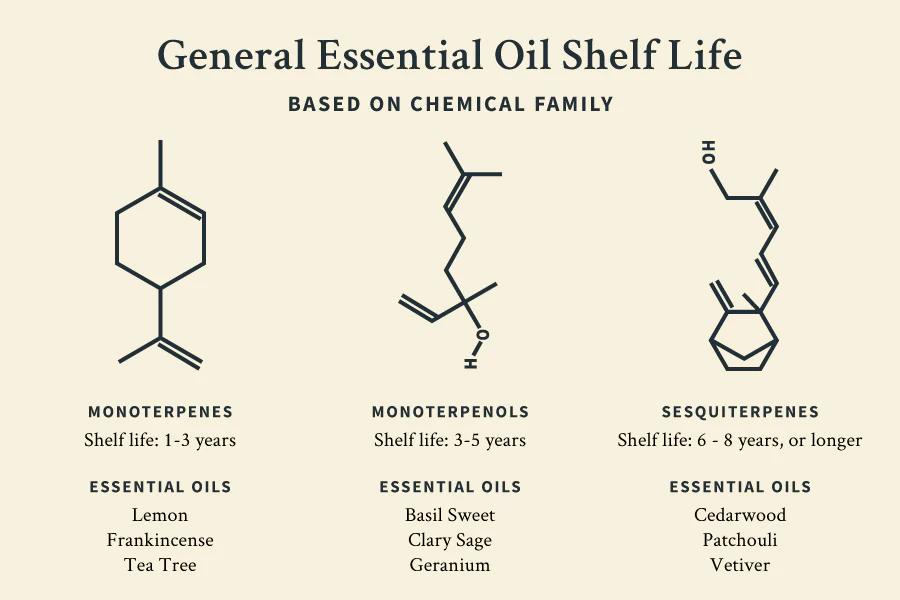
3. 15 Essential Oils You Should Know
Lavender (Lavandula angustifolia)
- Scent: Soft, sweet, floral with herbaceous undertone.
- Traditional Uses: Ancient Romans used it in baths; Middle Ages healers believed it purified the air.
- Scientific Evidence: Multiple clinical studies confirm lavender aromatherapy reduces anxiety and improves sleep.
- Uses: Stress relief, insomnia, burns, insect bites.
- DIY: Pillow Spray – 10 drops lavender + 5 drops chamomile + 100ml water in spray bottle. Mist on bedding.
Peppermint (Mentha × piperita)
- Scent: Cool, sharp, mentholic.
- Key Components: Menthol, menthone.
- Evidence: Peppermint capsules are clinically proven to reduce IBS symptoms. Peppermint inhalation relieves nausea.
- Uses: Headaches, digestion, energy boost.
- DIY: Focus Stick – 10 drops peppermint + 10 drops orange applied to inhaler stick.
Tea Tree (Melaleuca alternifolia)
- Scent: Fresh, medicinal.
- Traditional Use: Aboriginal people used crushed leaves to treat wounds.
- Evidence: Demonstrated antimicrobial action; effective in treating mild acne.
- Uses: Acne, dandruff, fungal infections, cleaning.
- DIY: Anti-Acne Gel – 1 drop tea tree + teaspoon pure aloe vera gel. Apply lightly.
Eucalyptus (Eucalyptus globulus)
- Scent: Sharp, camphoraceous.
- Key Compound: 1,8-cineole.
- Evidence: Inhalation improves breathing, eases chronic bronchitis symptoms.
- Uses: Congestion, coughs, muscular aches.
- DIY: Vapor Steam – Add 3 drops eucalyptus to bowl of hot water, inhale steam.
Lemon (Citrus limon)
- Scent: Bright, zesty.
- Key Compound: Limonene.
- Evidence: Shown to elevate mood and reduce stress. Powerful surface disinfectant.
- Uses: Home cleaning, focus booster.
- DIY: Cleaning Spray – 15 drops lemon + 10 drops tea tree + 1 cup vinegar + 1 cup water in spray bottle.
Frankincense (Boswellia carterii)
- Scent: Warm, earthy, resinous.
- History: Burned in temples for purification; gifted to kings.
- Evidence: Shown to reduce anxiety during meditation; has anti-inflammatory compounds.
- Uses: Skin rejuvenation, meditation, emotional grounding.
- DIY: Face Serum – 5 drops frankincense + 3 drops rose + 30ml jojoba oil.
Rosemary (Rosmarinus officinalis)
- Scent: Energizing, herbaceous.
- Evidence: Shown to improve memory recall in lab tests; stimulates scalp for hair growth.
- Uses: Cognitive clarity, hair support, joint/muscle care.
- DIY: Hair Rinse – 5 drops rosemary added to warm herbal tea rinse.
Chamomile (Matricaria recutita / Anthemis nobilis)
- Scent: Sweet, apple-like.
- Compounds: Bisabolol, chamazulene.
- Uses: Calming children, reducing inflammation, soothing skin.
- DIY: Bedtime Blend – 2 drops chamomile + 2 drops lavender in diffuser.
Ylang-Ylang (Cananga odorata)
- Scent: Exotic, floral.
- Uses: Aphrodisiac, stress reduction, balancing hormones.
- DIY: Massage Oil – 4 drops ylang-ylang + 30ml sweet almond oil.
Clary Sage (Salvia sclarea)
- Scent: Earthy, slightly nutty.
- Uses: Eases menstrual cramps, boosts mood, reduces stress.
- DIY: PMS Roller – 3 drops clary sage + 2 drops lavender in 10ml jojoba oil roller.
Geranium
- Scent: Rosy, fresh green.
- Uses: Skin toning, balancing emotions, hormone support.
Orange (Citrus sinensis)
- Scent: Sweet, fruity, uplifting.
- Uses: Boosts joy, relieves anxiety, supports cleaning.
Sandalwood (Santalum album)
- Scent: Soft, woody, seductive.
- Uses: Meditation, skin hydration, grounding.
Oregano (Origanum vulgare)
- Scent: Spicy, pungent.
- Compounds: Carvacrol.
- Uses: Potent antimicrobial. Caution: must be heavily diluted.
Ginger (Zingiber officinale)
- Scent: Warm, spicy.
- Uses: Relieves nausea, warms muscles, supports digestion.
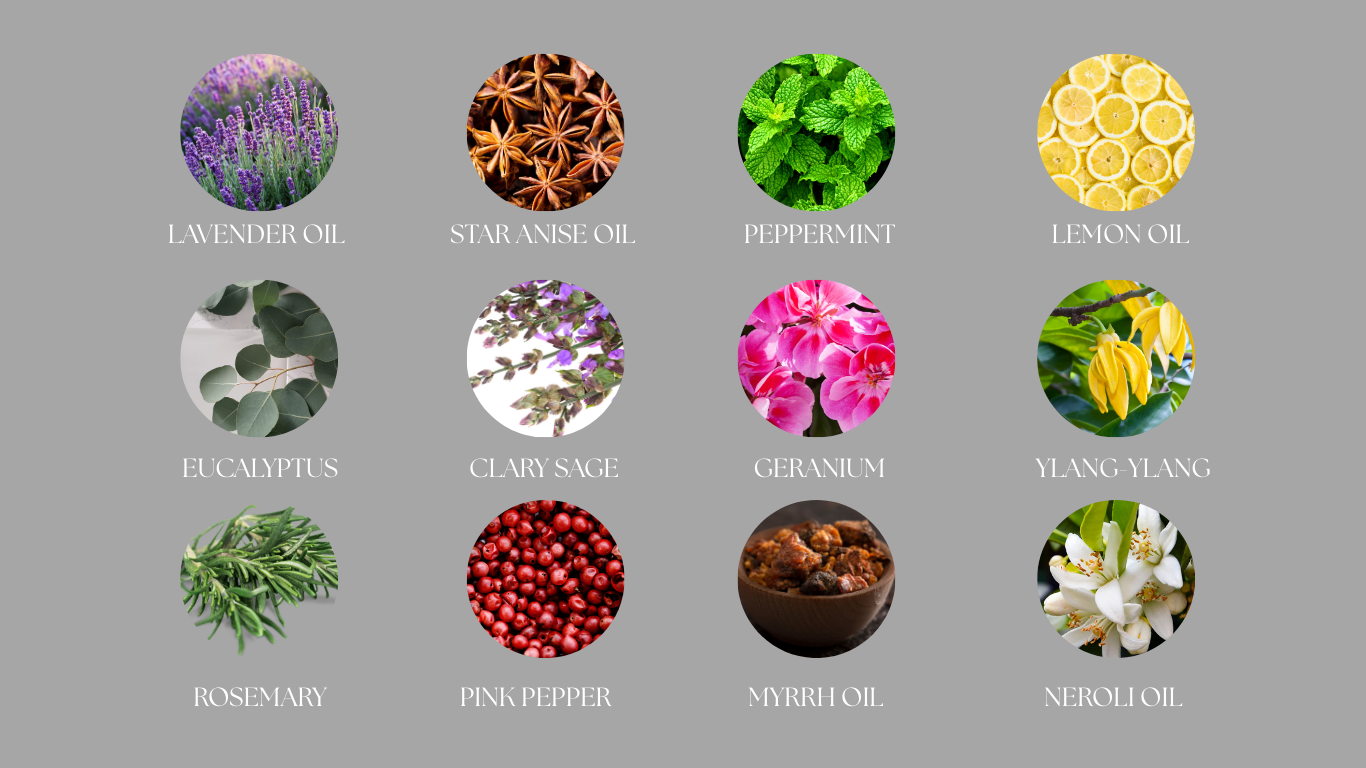
4. Health & Wellness Benefits of Essential Oils
Essential oils are not medical cures, but both scientific research and long-standing traditional use support their role in enhancing wellness. Their effects depend on chemistry, dosage, and method of application (inhalation, topical use, or diffusion).
Stress & Mood Support
- Lavender (linalool, linalyl acetate): reduces cortisol, lowers anxiety, and improves relaxation.
- Bergamot (limonene, linalool): uplifting, anti-stress, used in aromatherapy for mood disorders.
- Ylang-Ylang (benzyl acetate, linalool): decreases heart rate and blood pressure, induces calm.
Sleep Quality
- Lavender inhalation: improves sleep onset, duration, and quality in students, elderly, and patients with mild insomnia.
- Roman Chamomile: mild sedative effects due to apigenin; promotes restful sleep.
Skincare & Dermatology
- Tea Tree (terpinen-4-ol): antimicrobial, reduces acne-causing Cutibacterium acnes.
- Frankincense (boswellic acids): promotes skin regeneration, may reduce appearance of fine lines.
- Chamomile (chamazulene, bisabolol): calms redness, soothes eczema-prone skin.
Respiratory Support
- Eucalyptus (1,8-cineole): opens airways, supports breathing in colds and sinusitis.
- Peppermint (menthol): activates cold receptors, improves perceived airflow.
- Thyme (thymol, carvacrol): antimicrobial, supports immune defense in respiratory tract.
Pain & Inflammation Relief
- Peppermint (menthol): topical cooling effect eases tension headaches and muscle aches.
- Ginger (gingerol, zingiberene): anti-inflammatory, useful for sore joints and arthritis.
- Clove (eugenol): analgesic, used in dental care for toothache relief.
Digestive Health
- Peppermint oil capsules: clinically shown to relieve IBS (irritable bowel syndrome) symptoms.
- Ginger oil: reduces nausea, effective against motion sickness and pregnancy-related nausea.
- Fennel oil: carminative, eases bloating and mild digestive spasms.
Immune Health & Protection
- Oregano (carvacrol, thymol): potent antimicrobial against bacteria and fungi.
- Clove (eugenol): antiviral, antifungal, supports oral health.
- Tea Tree: antimicrobial for home cleaning; prevents mold and bacterial growth.
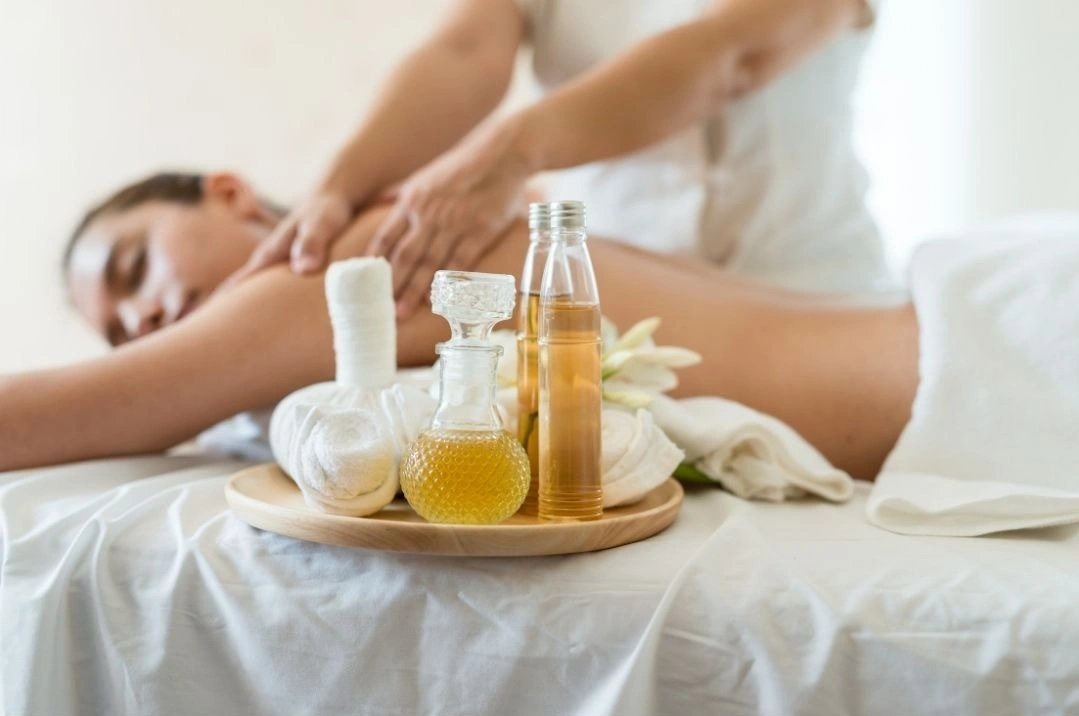
5. Safety, Risks, and Misconceptions of Essential Oils
Essential oils are highly concentrated plant extracts. Their potency makes them valuable, but also requires caution and informed use. Misuse can lead to skin irritation, toxicity, or harm to vulnerable groups.
Dilution Guidelines
Standard adult dilution: 1–2% = 2–4 drops of essential oil per teaspoon (5 ml) of carrier oil.
Sensitive skin, elderly, or long-term use: 0.5–1% recommended.
For children over 2 years: 0.25–0.5% max, unless otherwise guided by a healthcare provider.
Patch Testing
Always test on a small area (e.g., inner forearm).
Wait 24 hours to check for redness, itching, or burning before wider use.
Photosensitivity
Some citrus oils (especially bergamot, lime, lemon, grapefruit, bitter orange) contain furocoumarins that increase UV sensitivity.
Risk: Sunburn, blistering, or hyperpigmentation when skin is exposed to sunlight/UV beds.
Precaution: Avoid sun for 12–24 hours after applying photosensitive oils.
Ingestion Risks
Essential oils are 50–100 times more concentrated than dried herbs.
Ingest only under qualified medical or clinical aromatherapist guidance.
Risks: gastrointestinal irritation, liver stress, or poisoning.
Use with Children
Infants (<2 years): Avoid strong oils such as eucalyptus, peppermint, rosemary, and wintergreen (can affect breathing or nervous system).
Safer choices: lavender, chamomile, frankincense (at very low dilutions).
Use with Pets
Cats and dogs have different metabolisms and may not detoxify certain compounds.
Avoid using tea tree, wintergreen, eucalyptus, peppermint, pine, and citrus oils directly on or near pets without veterinary advice.
Diffusion: Ensure good ventilation and allow pets to leave the room.
Common Misconceptions
Myth: “If it’s natural, it’s always safe.”
Reality: Many natural substances are toxic (arsenic, hemlock, poison ivy). Essential oils can burn skin, disrupt hormones, or harm the liver if misused.
Myth: “More is better.”
Reality: Higher concentrations do not increase effectiveness — they increase risk of irritation and sensitization.
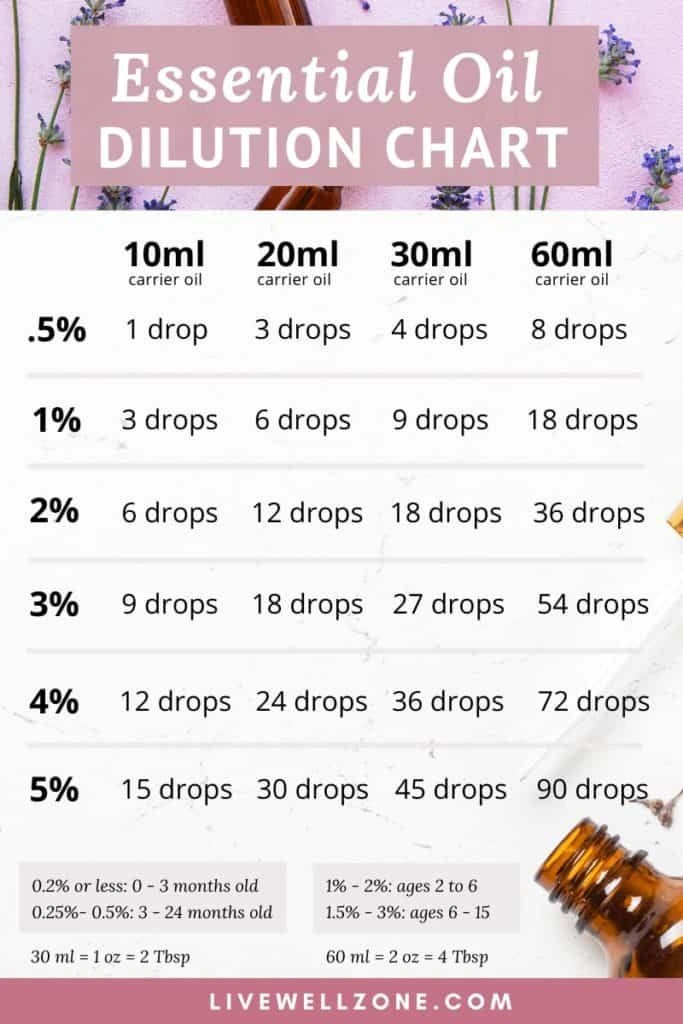
6. Choosing High-Quality Oils
Not all essential oils on the market are pure or authentic. Because oils can be adulterated, diluted, or mislabeled, a quality checklist helps ensure you are purchasing safe, effective products.
Latin Botanical Name
Must specify the full scientific name (e.g., Lavandula angustifolia, not just “lavender”).
Ensures correct plant species is used — different species have very different chemistry and effects.
Country of Origin
High-quality suppliers disclose growing region, climate, and harvest details.
Example: Tea tree from Australia vs. tea tree from other regions can vary in terpinen-4-ol content.
GC–MS Testing (Gas Chromatography–Mass Spectrometry)
Gold-standard laboratory test showing exact chemical profile.
Confirms purity, rules out adulteration, and verifies safety levels of key compounds.
Proper Packaging
Stored in dark amber or cobalt glass bottles to prevent UV degradation.
Tightly sealed caps or reducers prevent oxidation and evaporation.
Fair & Realistic Pricing
Authentic oils are never suspiciously cheap (e.g., true rose oil requires ~10,000 petals for 5 ml).
Extremely low prices often indicate dilution or synthetic substitutes.
Sustainable & Ethical Sourcing
Preference for companies that use sustainable harvesting to protect endangered plants (e.g., sandalwood, frankincense).
Reputable brands provide traceability and transparency about their supply chain.
7. Trends and Sustainability
The essential oil industry continues to evolve, shaped by consumer lifestyle shifts, medical interest, and sustainability concerns.
Roller Blends – Convenience & Accessibility
- Pre-diluted roller bottles make aromatherapy safe, portable, and beginner-friendly.
- Popular for stress relief, sleep support, and on-the-go energy boosts.
- Growth fueled by wellness influencers and demand for ready-to-use products.
Smart Diffusers – Technology Meets Aromatherapy
- App-controlled diffusers allow scheduling, blend customization, and smart home integration.
- Consumers enjoy combining personalized wellness routines with technology.
- Expanding into corporate wellness, spas, and even luxury hotel experiences.
Clinical Studies – Growing Medical Acceptance
- Hospitals and clinics are increasingly testing essential oils for patient comfort and recovery support.
- Lavender → stress and anxiety reduction.
- Citrus oils → uplifting moods in oncology or palliative care settings.
- Peppermint → easing nausea and headaches post-surgery.
- Signals a trend toward integrative medicine combining conventional care with aromatherapy.
Sustainability & Ethical Sourcing
- Concern rising over overharvesting of sandalwood, frankincense, and rosewood.
- Eco-sourcing initiatives include:
Reforestation programs for sandalwood.
Fair-trade projects ensuring farmers receive ethical compensation.
CO₂ extraction and green chemistry to reduce waste and solvent use.
- Brands with transparent supply chains are gaining trust with eco-conscious consumers.
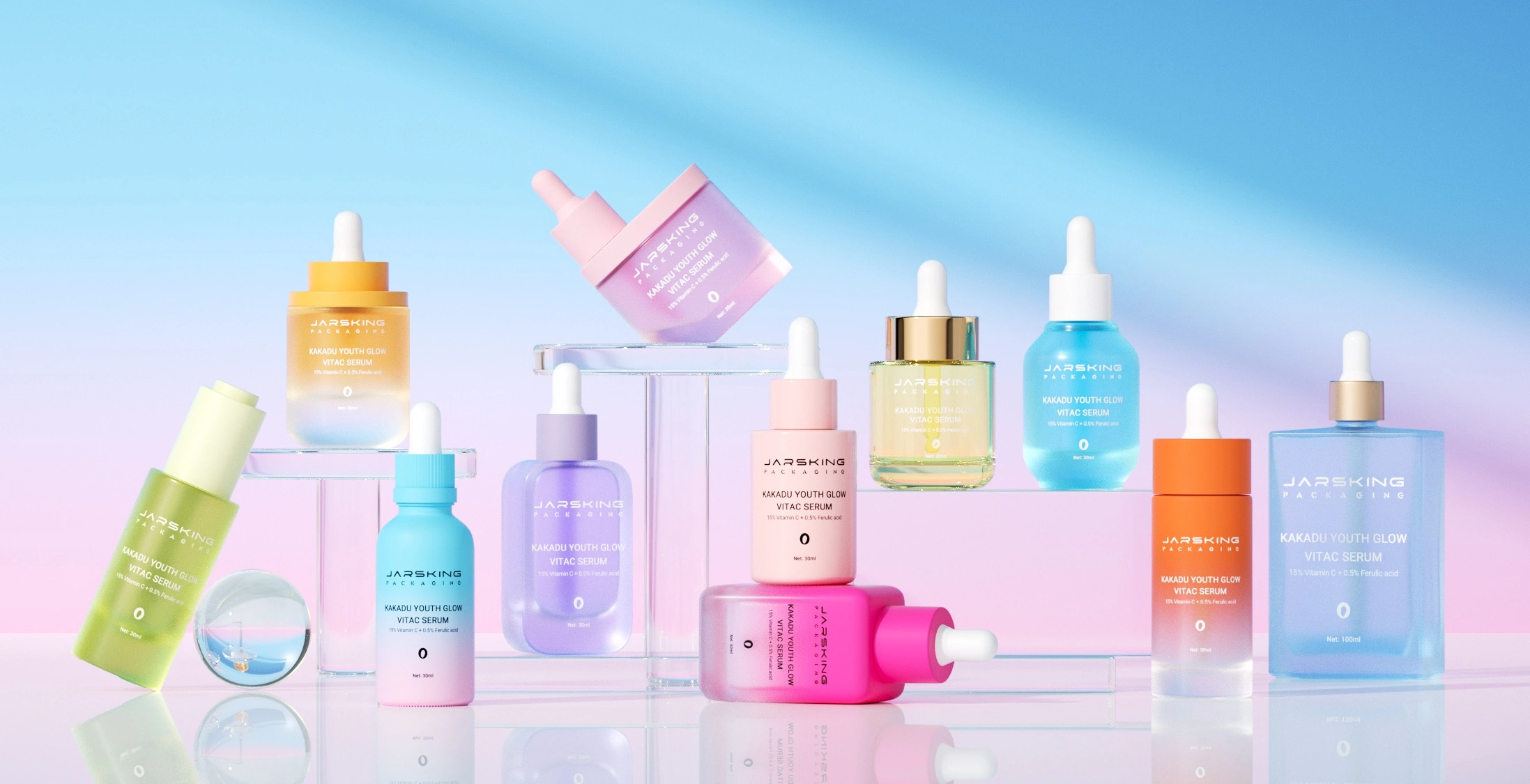
8. Conclusion
Essential oils are ancient remedies with modern relevance, bridging thousands of years of cultural practice with today’s scientific insights. From the sacred incense of temples to the lavender fields of France, these concentrated extracts have offered humanity both beauty and healing. Now, in an age that craves natural alternatives, they provide versatile tools for stress relief, skin care, home cleaning, and emotional well-being.
Yet, their power requires responsibility. Because they are so concentrated, essential oils must be used with care—always diluted properly, chosen from reliable sources, and matched to the individual’s needs. When handled respectfully, their chemistry brings genuine benefits: lavender to calm, peppermint to energize, tea tree to cleanse, and frankincense to ground. Misused, however, even the most “natural” essence can irritate skin, harm pets, or fail to deliver its intended effect. Knowledge is the key to safe enjoyment.
Ultimately, essential oils are not miracle cures but valuable allies for living more mindfully and naturally. They invite us to slow down, breathe deeply, and reconnect with the plant world in a tangible way. Whether diffused in a quiet bedroom, blended into a homemade cleaner, or added to a soothing massage oil, each drop reminds us that nature still offers wisdom, comfort, and balance—gifts we can carry into our everyday lives.

